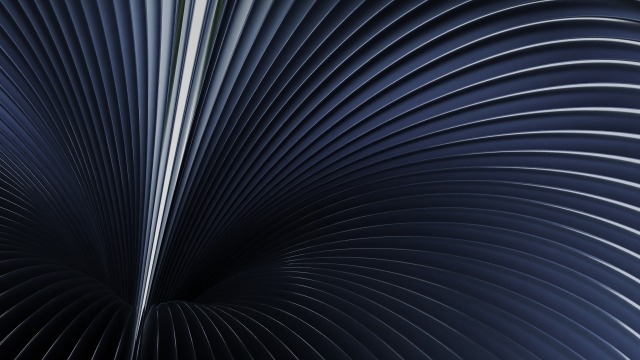Research Credit Update: Compromise Provides Taxpayers with a Fistful of Dollars
The tax compromise signed into law by President Obama this past Friday includes a variety of individual and business tax relief measures, ranging from the much debated 35 percent top tax rate for estate taxes through 2012, to numerous benefits for businesses, such as the 100 percent first-year bonus depreciation for investments in certain machinery and equipment placed in service prior to January 1, 2012. The compromise also notably includes a two-year extension of the federal research credit, for calendar years 2010 and 2011.
Summary of the Research Credit Extension
The research credit continues its tradition of last-minute extensions, despite recent calls from President Obama and numerous members of Congress for research credit enhancements and permanency. Political issues, such as budgetary concerns and other domestic policy issues, have again prevented a permanent credit from materializing. With the two-year extension, the credit rates and allowable credit regimes will remain consistent with the prior two-year research credit extension, which covered calendar years 2008 and 2009.
While potentially lucrative, the research credit remains a “Tier 1” Internal Revenue Service (IRS) issue, meaning that research credit claims continue to be items of high strategic importance and, therefore, great scrutiny. Fortunately, recent research credit legal decisions have provided useful guidance to taxpayers for maximizing their research credit claims. The outcome of these cases has been mostly positive, with favorable guidance for taxpayers including reasonable base-period documentation requirements (Union Carbide Corporation) and a holding that the integration of existing complex systems can qualify for a research credit (Trinity Industries). Please see Tax Advisor Weekly 2009, Issues and , for a detailed analysis of the impact of these recent decisions.
What Does This Mean for Your 2010 Research Credit (and the Year-End Tax Provision)?
Many companies have likely postponed much, if not all, work for their 2010 research credit because of the uncertainty of an extension being granted. Many corporate tax departments now need to catch up on identifying the qualifying activities, calculating the qualified research expenditures, and collecting supporting contemporaneous documentation. Since this credit was not an "enacted" law in the first three quarters of the 2010 calendar year, all of the 2010 benefit will be recorded in the fourth quarter of 2010 (for calendar-year taxpayers), resulting in a significantly reduced effective tax rate for the year, as compared with the estimated effective tax rates previously reported to shareholders. For FASB ASC 740 (formerly FASB 109 and FIN 48) purposes in the short term, audit firms are likely to ask for both qualitative and quantitative information for a review of the 2010 tax provision.
What Areas Are Important to Focus on for Your 2010 Research Credit?
Given the credit’s continuing Tier 1 status and the recent spate of court cases, the research credit will continue to be a magnet for IRS audit scrutiny. Common areas of IRS focus will likely include: (1) substantiation of the nexus of the qualified research expenses to the reported research activities, (2) sufficiency of base-period consistency and documentation, (3) explanation of the nature of a company’s research activities (and satisfaction of the four-part test), (4) properly making the ASC and 280C elections (if applicable) and (5) documentation of the additional tests for internal-use software.
In particular, the establishment of nexus between qualifying costs and the relevant business components (i.e., the qualifying research credit activities) is likely to be a continued area of IRS focus. While taxpayers are not required to use a particular accounting methodology to capture qualifying costs, establishing such nexus when possible will most likely reduce the likelihood of credit disallowance. When available, project-based accounting is generally preferred to capture research costs in order to provide a clear link to business components. IRS audit concerns are more likely to arise when taxpayers’ financial reporting systems require them to rely on a cost center or hybrid approach to capture qualifying research credit expenses.
The methods to compile information to properly support the relationship between qualifying research activities and accounting records are often deemed insufficient by the IRS. Lacking a substantial relationship can result in a credit study that may not be auditable since the research projects and the qualifying activities fail to relate clearly to the qualified research expenses. In a clear sign of the importance of this area, the IRS has scheduled meetings in January with a number of practitioners to seek comments on how to deal with nexus requirements.
What Does the Future Hold for the Federal Research Credit?
This legislation marks the 14th research credit extension since its enactment in 1981, as the credit remains a temporary benefit and is extended only through the 2011 calendar year. The research credit has retained strong bipartisan support, yet has failed to become a permanent incentive because of concerns about the structure of the credit as well as its large budgetary price tag. While it is anyone’s best guess as to the long-term prognosis of the research credit, the research credit ultimately needs to provide a powerful incentive for continued U.S.-based research and development. Key issues to discuss and address include simplicity, permanency and international competition.
A simplified credit can ease the burden on companies to capture the credit. For example, while often providing the greatest benefit to companies, the traditional research credit method continues to require information that is more than 20 years old to complete the base-period calculation. As time passes, taxpayers may find it increasingly problematic, if not impossible, to retrieve sufficient information to support the research credit base-period years (1984-1988) for taxpayer acquisitions and/or divestures. Even base-period oral testimony, which was accepted in Union Carbide Corporation as sufficient, can be difficult to obtain, as few company employees were likely employed during the base period and those who were around may not remember key details of research efforts.
The lack of a permanent credit can undermine credit effectiveness as a strategic financial incentive, as companies cannot count on long-term benefits with certainty because of the frequent credit expirations. Businesses need longer-term credit certainty to maximize credit effectiveness, as the timeline for large research and development projects can span many years. Also, many companies may not be taking full advantage of the research credit because the temporary nature of the incentive discourages them from devoting the necessary internal resources to capture the full benefit. In contrast, most other countries throughout the world offer taxpayers permanent research incentives.
Alvarez & Marsal Taxand Says:
The federal research credit provided more than $5.5 billion dollars of benefit to companies during fiscal year 2009, and will continue to remain a strong financial benefit for companies performing research and development, as defined by the tests under Internal Revenue Code sections 41 and 174. Additionally, a majority of states have some type of research incentives, with most states conforming to the guidance set forth under the federal research credit regimes. Fortunately, most states do not conform to the federal research credit expiration dates. A number of states have strengthened their research credit incentives in recent years in order to attract and retain more businesses and have added additional benefits such as refundable tax credits in the event no state tax is due.
Although this two-year extension is a welcome development, it is important to focus on the global impact that research incentives have on a company’s choice of not whether to perform R&D activities, but where. Numerous nations have surpassed the United States by offering more generous research tax benefits. In the late 1980s, the United States boasted the world’s strongest research and development tax incentive. However, in the past couple of decades, other countries have aggressively added and strengthened research and development incentives. A growing trend is historically U.S.-based companies shifting research and development resources offshore to countries with permanent and more tax-favorable research incentives along with a highly educated and often comparatively lower-cost workforce.
In the 2009 edition of the , we explored over 40 different research credit regimes around the globe. Unfortunately, when comparing the overall tax rates in many of these jurisdictions, combined with more lucrative research incentives, the United States lags behind in attracting business investment. In the next several weeks, we will be compiling the 2011 edition of the Global Guide to R&D Tax Incentives. In addition to a review of the global incentives available, in this edition of the guide we will also analyze the various research incentives offered by many U.S. states.
President Obama has promoted a permanent R&D credit on several occasions that addresses the above issues. The White House has proposed an “expanded, simplified, and permanent” research credit, including an increased ASC credit regime rate to 17 percent. The overall aim has been to increase the credit by 20 percent and devote about $100 billion over 10 years to the incentive. But as is usually the case, we are currently left to deal with yet another credit extension at the end of next year.
If there is a story to be told about the relationship between global incentives, state incentives and tax rates, it’s this: companies will likely perform the same activities with or without the incentives or with or without higher tax rates. Surely a pharmaceutical company won’t stop R&D because of an expired research credit, just as a manufacturing company won’t stop manufacturing because of a higher tax rate. That has never been the question. The issue is, and always has been, where will these activities occur? When the research credit was first enacted during the Reagan administration, the goal was not to cause companies to perform R&D. It was for companies to perform their R&D in the U.S., not offshore. Let’s not lose that message.
Feedback:
We would like to hear from you.
Disclaimer
As provided in Treasury Department Circular 230, this publication is not intended or written by Alvarez & Marsal Taxand, LLC, (or any Taxand member firm) to be used, and cannot be used, by a client or any other person or entity for the purpose of avoiding tax penalties that may be imposed on any taxpayer.
The information contained herein is of a general nature and based on authorities that are subject to change. Readers are reminded that they should not consider this publication to be a recommendation to undertake any tax position, nor consider the information contained herein to be complete. Before any item or treatment is reported or excluded from reporting on tax returns, financial statements or any other document, for any reason, readers should thoroughly evaluate their specific facts and circumstances, and obtain the advice and assistance of qualified tax advisors. The information reported in this publication may not continue to apply to a reader's situation as a result of changing laws and associated authoritative literature, and readers are reminded to consult with their tax or other professional advisors before determining if any information contained herein remains applicable to their facts and circumstances.
About Alvarez & Marsal Taxand
Alvarez & Marsal Taxand, an affiliate of Alvarez & Marsal (A&M), a leading global professional services firm, is an independent tax group made up of experienced tax professionals dedicated to providing customized tax advice to clients and investors across a broad range of industries. Its professionals extend A&M's commitment to offering clients a choice in advisors who are free from audit-based conflicts of interest, and bring an unyielding commitment to delivering responsive client service. A&M Taxand has offices in major metropolitan markets throughout the U.S., and serves the U.K. from its base in London.
Alvarez & Marsal Taxand is a founding member of Taxand, the first global network of independent tax advisors that provides multinational companies with the premier alternative to Big Four audit firms. Formed in 2005 by a small group of highly respected tax firms, Taxand has grown to more than 2,000 tax professionals, including 300 international partners based in nearly 50 countries.
To learn more, visit www.alvarezandmarsal.com or www.taxand.com.







